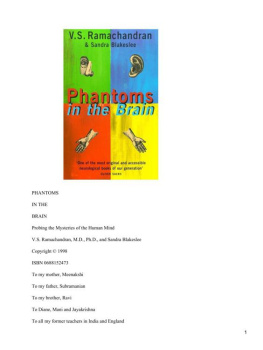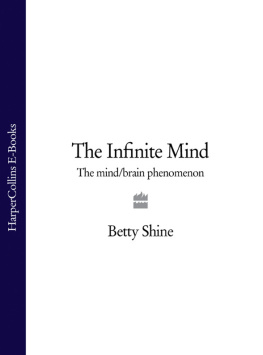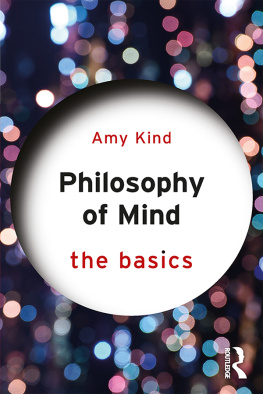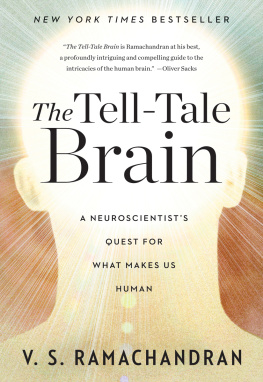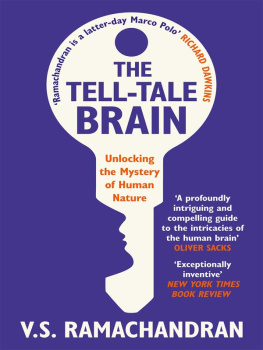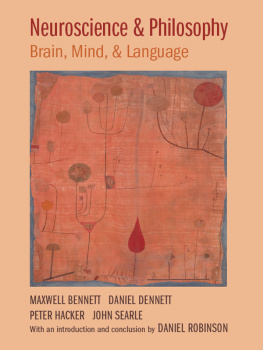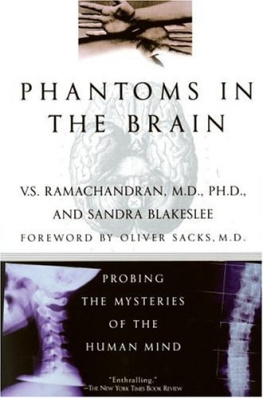The Emerging Mind: The Reith Lectures 2003
Vilayanur S. Ramachandran
Annotation
, , , . - .
.. , ...
., , , , (-), . , (Trinity College) . , ll Soul's College , , Aliens Kappers , ( ) (1995); , (NIMH) , * -- (Cold Spring Harbor), , , .
120 ( Scientific American), Phantoms in the Brain ( ), Channel 4 PBS . Newsweek XXI .
Vilayanur S Ramachandran
The Emerging Mind
The Lecturer: Vilayanur S Ramachandran
Vilayanur S Ramachandran is Director of the Centre for Brain and Cognition and professor with the Psychology Department and the Neurosciences Programme at the University of California, San Diego. He is also Adjunct Professor of Biology at the Salk Institute.
He originally trained as a doctor and obtained an M.D. from Stanley Medical College, where he was awarded gold medals in pathology and clinical medicine. He also studied at Trinity College, Cambridge, where he was awarded a Ph.D. and was elected a senior Rouse-Ball Scholar.
He has received many honours and awards including a fellowship from All Souls College, Oxford. He is also a fellow of the Neurosciences Institute in La Jolla and a fellow of the Institute for Advanced Studies in Behavioural Sciences at Stanford.
He has lectured widely on art - as well as visual perception and the brain - and is a trustee of the San Diego Museum of Art. He has published over 120 papers in scientific journals, is Editor-in-chief of the Encyclopaedia of Human Behaviour and author of a popular book on neuroscience, Phantoms In The Brain.
Professor Ramachandran's work has concentrated on investigating phenomena such as phantom limbs, anosognosia or denial of paralysis, Capgras syndrome, and anorexia nervosa.
Although most of these conditions have been know since the turn of the century they have usually been treated as curiosities and there has been almost no experimental work on them. V.S. Ramachandran has brought them from the clinic to the laboratory and shown that an intensive study of these patients can often provide valuable new insights into the workings of the human brain.
Lecture 1: Phantoms in the Brain.
The history of mankind in the last three hundred years has been punctuated by major upheavals in human thought that we call scientific revolutions - upheavals that have profoundly affected the way in which we view ourselves and our place in the cosmos. First there was the Copernican revolution - the notion that far from being the centre of the universe, our planet is a mere speck of dust revolving around the sun. Then there was the Darwinian revolution culminating in the view that we are not angels but merely hairless apes, as Huxley once pointed out in this very room. And third there was Freud's discovery of the "unconscious" - the idea that even though we claim to be in charge of our destinies, most of our behaviour is governed by a cauldron of motives and emotions which we are barely conscious of. Your conscious life, in short, is nothing but an elaborate post-hoc rationalisation of things you really do for other reasons.
But now we are poised for the greatest revolution of all - understanding the human brain. This will surely be a turning point in the history of the human species for, unlike those earlier revolutions in science, this one is not about the outside world, not about cosmology or biology or physics, but about ourselves, about the very organ that made those earlier revolutions possible. And I want to emphasize that these insights into the human brain will have a profound impact not just on us scientists but also on the humanities, and indeed they may even help us bridge what CP Snow called the two cultures - science on the one hand and arts, philosophy and humanities on the other.
I would like to thank the BBC for inviting me to give the 2003 Reith lectures. I hope the lectures will appeal to a broad audience, fulfilling Lord Reith's original mission. Given the enormous amount of research on the brain, all I can do is to provide a very impressionistic survey rather than try to be comprehensive. Of course by doing this, I will be oversimplifying many of the issues involved and run the risk of annoying some of my specialist colleagues. But, as Lord Reith himself once said, "There are some people whom it is one's duty to offend!"
Although the lectures will cover a very wide spectrum of topics, there will be two recurring themes that run through all of them. The first broad theme is that by studying neurological syndromes that have been largely ignored as curiosities or mere anomalies we can sometimes acquire novel insights into the functions of the normal brain - how the normal brain works. The second theme is that many of the functions of the brain are best understood from an evolutionary vantage point.
The human brain, it has been said, is the most complexly organised structure in the universe and to appreciate this you just have to look at some numbers. The brain is made up of one hundred billion nerve cells or "neurons" which is the basic structural and functional units of the nervous system. Each neuron makes something like a thousand to ten thousand contacts with other neurons and these points of contact are called synapses where exchange of information occurs. And based on this information, someone has calculated that the number of possible permutations and combinations of brain activity, in other words the numbers of brain states, exceeds the number of elementary particles in the known universe.
Even though its common knowledge these days, it never ceases to amaze me that all the richness of our mental life - all our feelings, our emotions, our thoughts, our ambitions, our love life, our religious sentiments and even what each of us regards us his own intimate private self - is simply the activity of these little specks of jelly in your head, in your brain. There is nothing else.
Given the staggering complexity, where do you even begin? Well let's start with some basic anatomy. It's the 21st century and most people here have a rough idea what the brain looks like. It's got two mirror-image halves, called the cerebral hemispheres, so it looks like a walnut sitting on top of a stalk, called the brain stem, and each hemisphere is divided into four lobes, the frontal lobe, the parietal lobe, the occipital lobe and the temporal lobe. The occipital lobe in the back is concerned with vision. If it's damaged, you become blind. The temporal lobe is concerned with things like hearing, with emotions and certain aspects of perception. The parietal lobes of the brain are concerned with - at the sides of the head - they are concerned with creating a three-dimensional representation of the spatial layout of the external world, and also of your own body in that three-dimensional representation. And lastly the frontal lobes, in the front, are the most mysterious of all. They are concerned with some very enigmatic aspects of human mind and human behaviour such as your moral sense, your wisdom, your ambition and other activities of the mind which we know very little about.
Now there are several ways of studying the brain but my approach is to look at people who have had some sort of damage to a small part of the brain, or some change in a small part of the brain, and interestingly when you look at these people who have had a small lesion in a specific part of the brain, what you see is not an across-the-board reduction in all their cognitive capacities, not a blunting of their mind. What you see is often a highly selective loss of one specific function with other functions being preserved intact, and this gives you some confidence in asserting that that part of the brain is somehow involved in mediating that function.


